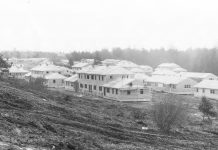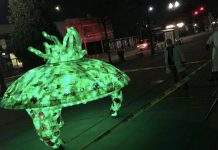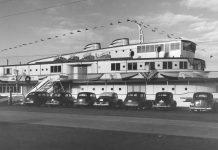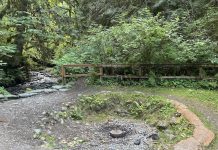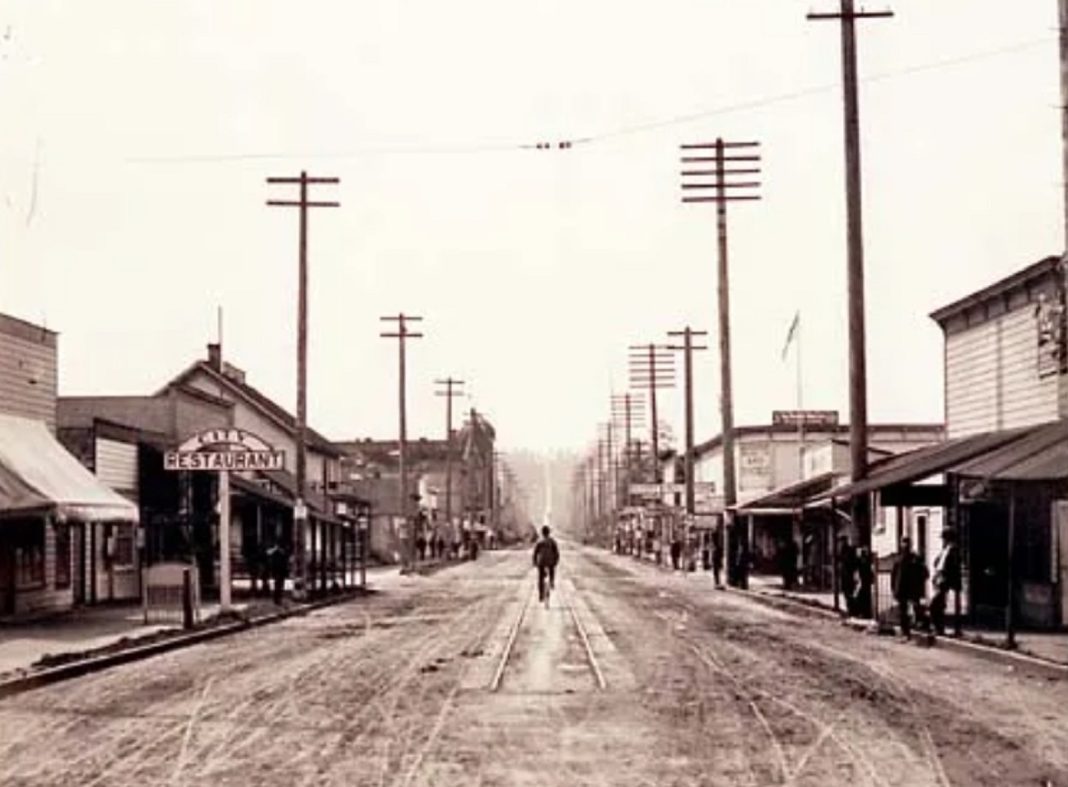The history of Puyallup, Washington, unfolds like the pages of a captivating saga, rooted in the geological tapestry that dates back to the mists of eons past. The Puyallup Valley, cradled by the gentle slopes of the surrounding terrain, embarked on its journey through time with the cataclysmic event of an eruption from the majestic Mt. Rainier around 370 B.C. This eruption unleashed a mighty mudflow, carving a path down the Carbon and Puyallup Rivers, ultimately shaping the picturesque landscape that would come to be known as the Puyallup Valley.
Fast forward to the latter half of the 19th century, and the valley’s narrative takes a turn, becoming intertwined with the endeavors of pioneering spirits who settled the region, tirelessly clearing the land and constructing small cities that would stand as testaments to their resilience and vision. The story of Puyallup thus unfolds, a rich tapestry woven with the threads of geological forces and the indomitable spirit of its pioneers.
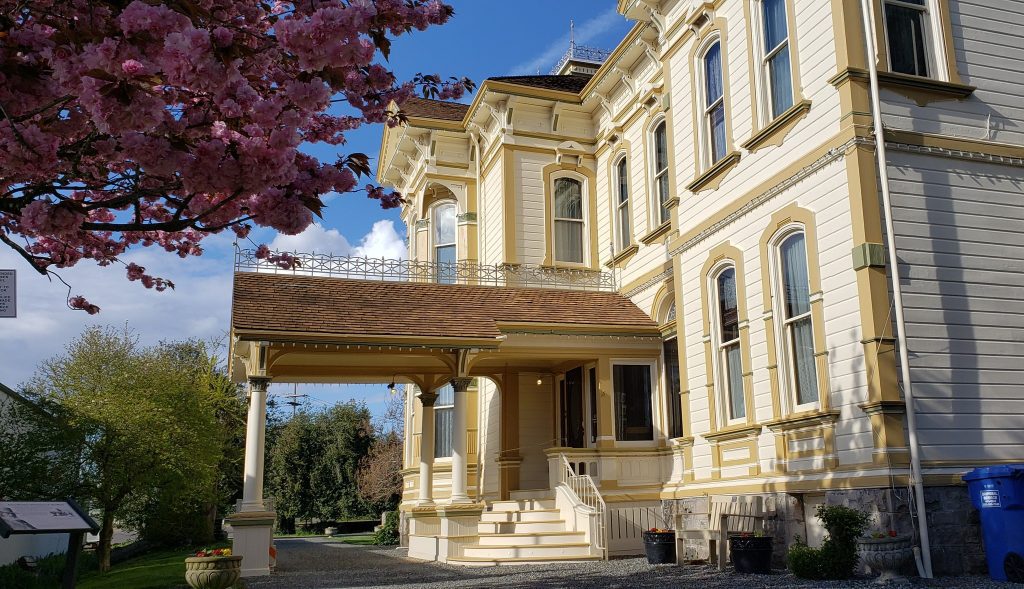
A Fecund Valley and its Early Native Peoples Exemplify Generosity
Over countless millennia, the Puyallup Valley served as the ancestral homeland for a community of Native Americans, numbering between 800 to 2,000 individuals, known as the “pough-allup,” or the “generous people” as they were revered by the neighboring Yakama Tribe with whom they traded. The valley itself thrived under the watchful gaze of the glaciers from the nearby Mount Rainier, fostering a lush landscape thick with fir, spruce, alder, vine maple, cedar, and cottonwood trees, and the undergrowth a tangled thicket of salal and salmonberry. In short, its land was just as generous as its hospitable-spirited people, as it offered protection, resources, and a place to call home.
These indigenous inhabitants that first called the valley home lived in permanent cedar longhouses along the banks of the broad and meandering Puyallup River and enjoyed an abundance of fresh and saltwater fish, especially salmon, along with clams, game, berries, nuts, and roots of the camas and potato-like wapato. They lived well in the security of the valley, and with their prosperity came unbridled generosity. Still, life here early on was not without its challenges, for as nourishing as the valley could be, the river that fed was often choked with massive logjams and, thus, prone to frequent flooding.
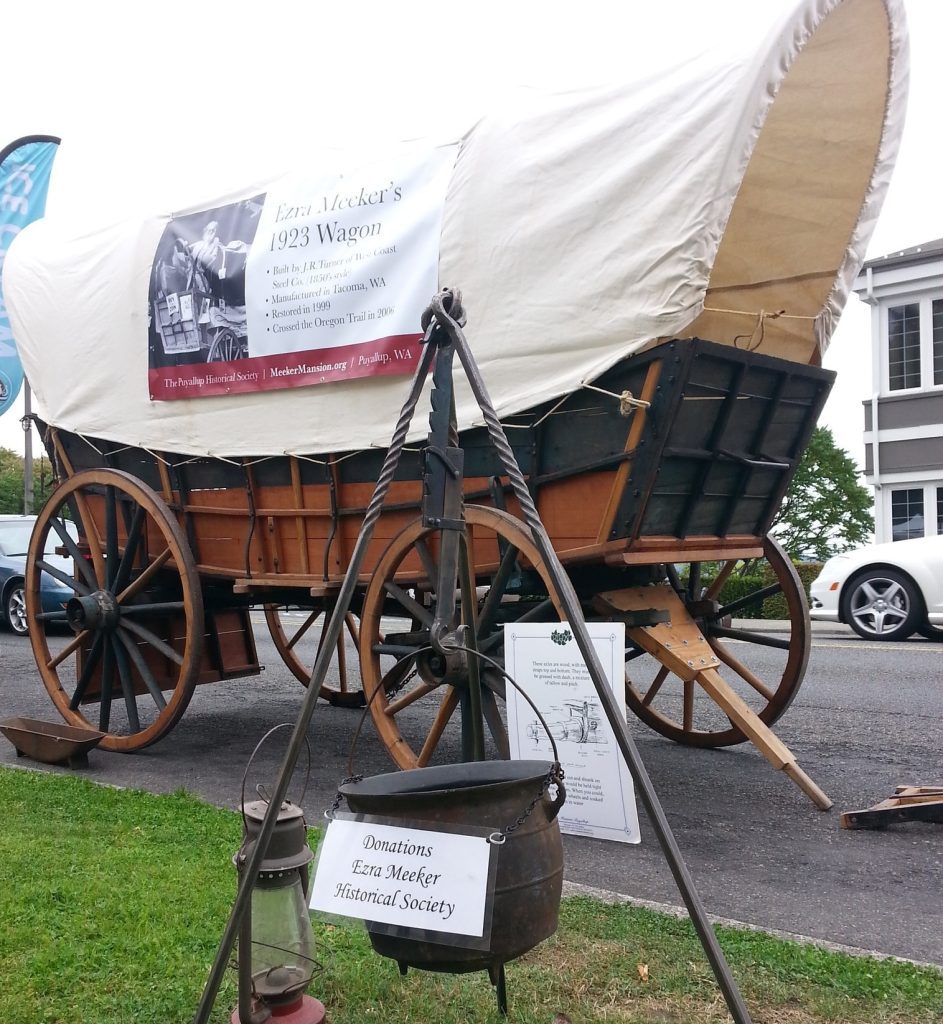
The First European Settlers Arrive to Puyallup in the 1830s
In the early 1830s, the Puyallup region witnessed the arrival of its first European settler, Dr. William F. Tolmie, who had been sent from Fort Nisqually to care for Hudson’s Bay Company trappers in 1833. Accompanied by an Indian guide and several natives, Dr. Tolmie traversed what he documented as the “Poyallipa” valley in his journal. Dr. Tolmie’s foray into this verdant expanse set the stage for the complex interweaving of cultures and histories that would define the Puyallup Valley.
By 1852, several men who had taken Native American wives had already staked homestead claims under the 1850 Donation Land Act. More settlers would arrive in 1853, which would go down in history as the first wagon train to cross the Cascades at Naches Pass.
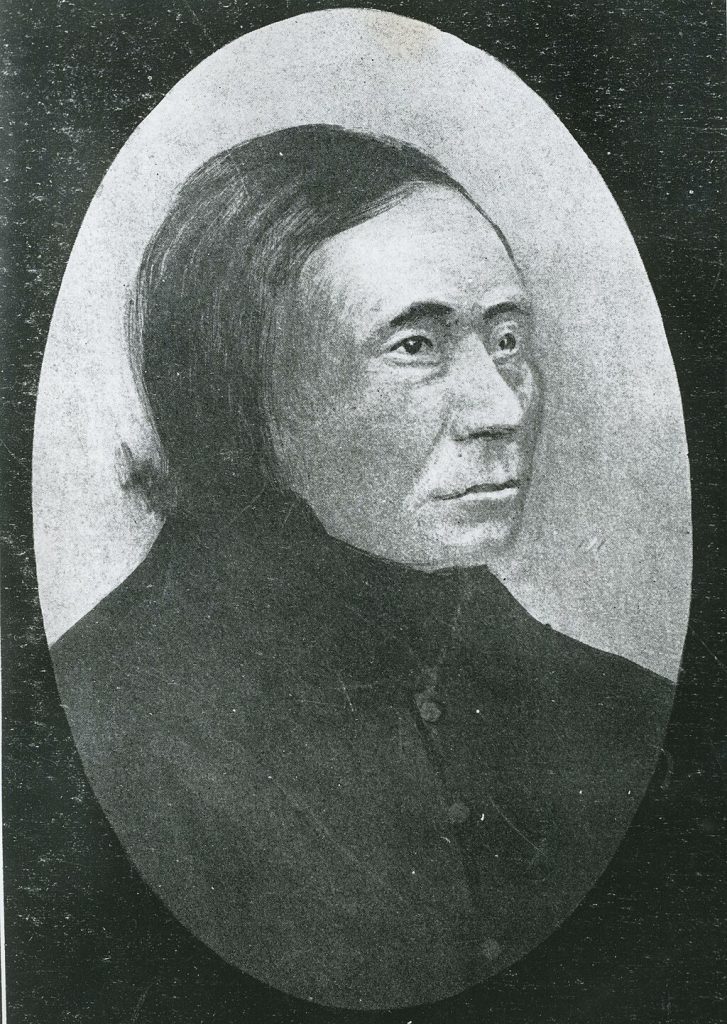
At first, the Native Americans welcomed the settlers, but trouble soon developed as territorial tensions escalated. The situation only intensified behind the guiding hands of the newly appointed Territory of Washington Governor Isaac Stevens. As a no Native American sympathizer, he pressured local tribal leaders into signing the Medicine Creek Treaty on December 26, 1854. The treaty was designed to preserve Indian fishing rights but at the cost of prime Nisqually farmland that would ultimately force tribes onto inadequate reservations.
Outraged by the mistreatment, Chief Leschi of the Nisqually tribe, who had been chosen amongst the Native American tribes of the Nisqually, Muckleshoot, Puyallup, and Klickitat to negotiate with Governor Stevens, decided to fight rather than give up his people’s land. Violence erupted in October of 1855, with the Puget Sound War consisting of a series of short skirmishes that lasted a year.
Previous European settlers to the region fled to Fort Steilacoom during this time for safety and would not begin returning in significant numbers until 1859. The final battle for the war occurred on or about March 10, 1856, after which the Americans would meet with the Native Americans on Fox Island, where they once again expressed their deep dissatisfaction with the 1855 treaties. To bring the war to an end, Americans promised to give them larger tracts with ground for horses.
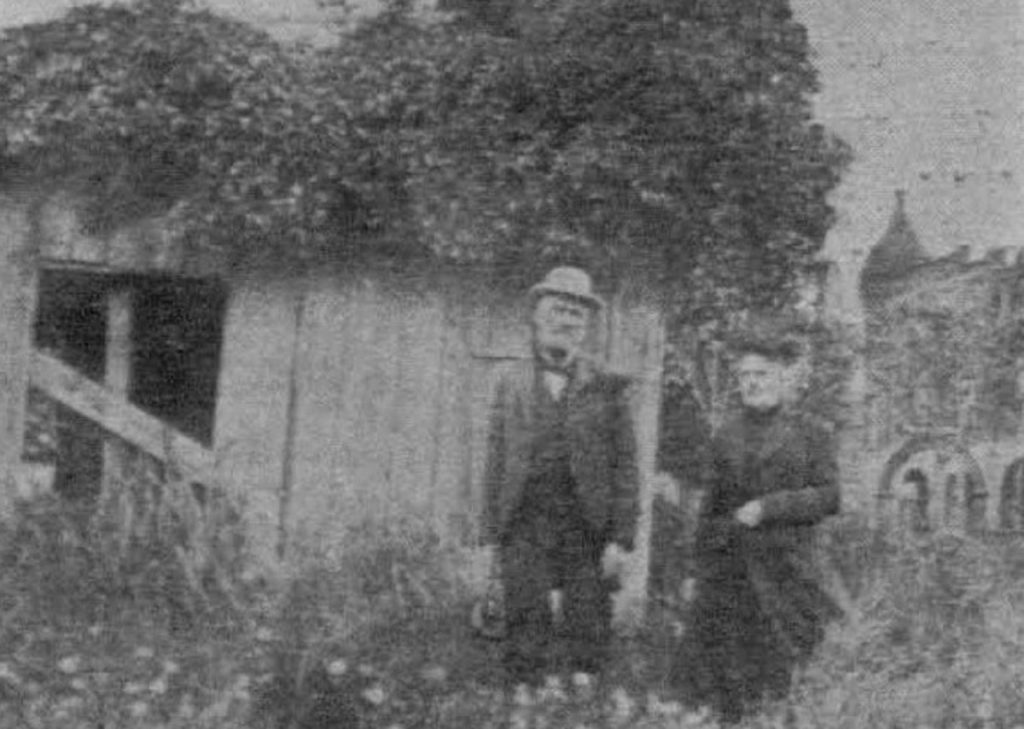
Founding Father Ezra Meeker Settles in Puyallup
Around the time the first settlers had begun to descend into the valley, an American pioneer by the name of Ezra Meeker was in search of farmland for his family and had decided to travel north with his brother to scout the lands to claim around the waterway in the newly separated Washington Territory. They had found themselves along the Puyallup River in 1853 but were deterred by the large number of giant trees that made it challenging to clear land for farming. They continued their journey, instead making McNeil Island their home in the new territory.
Starting over in this new land would prove hard for the Meekers. After his brother Oliver’s drowning on a business trip that simultaneously resulted in a financial loss with the sinking of his brother’s ship, the consequences of these disasters would reduce Ezra to near penury. Thankfully, he was able to secure the squatter’s claim of Jerry Stilly on land in the Puyallup Valley and moved his family there in 1862.
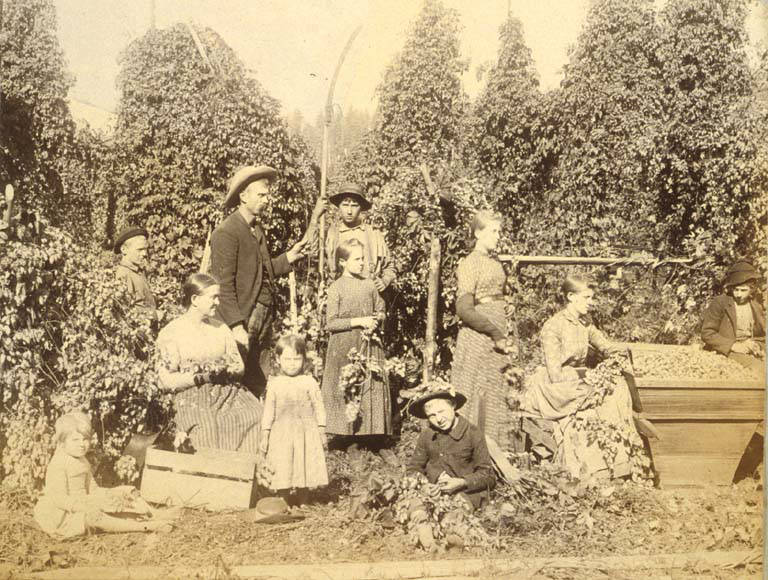
It would be here that his luck would turn around in 1865 when he would try his hand at growing hops. The plants grew exceptionally well as the fertile soil and temperate climate of the valley proved ideal for the hops, and at the end of the season, he had earned $185 from selling the crop. Such a sum was scarcely seen in the valley at the time, and a hop-growing boom promptly took off just as these new settlers began to understand the richness and generosity of the land just as the Native Americans had.
Never one to miss an opportunity, Meeker quickly formed his own hop brokerage business. From there, his success took off, and in 1877, he filed a plat for a townsite to surround his cabin and named the town Puyallup, paying homage to the Native Americans who had initially inhabited the land. He became the town’s first postmaster and strove to improve life in the region, even donating land and money towards town buildings and parks, a theatre, and a hotel while defraying the start-up costs of a wood products factory. He, too, strove to be just as generous as the land itself.
In the end, hops would make many farmers wealthy in the Puyallup Valley, including Ezra, who claimed to have earned half a million dollars from his crop. After writing his first book, “Hop Culture in the United States,” in 1880, he would become known as the “Hop King of the World.” Puyallup would celebrate its incorporation just ten years later, in 1890, with Ezra Meeker appointed its first mayor. His former home, the Ezra Meeker Mansion, has since been converted into a museum and is available for tours.
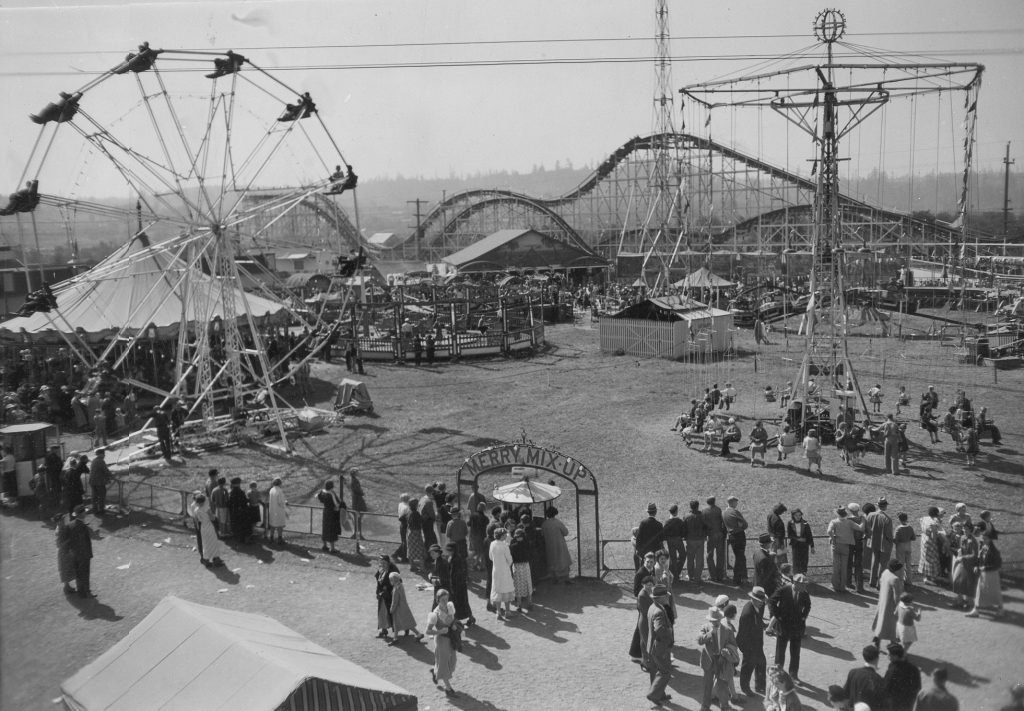
Sadly, an outbreak of hop lice in 1892 would end the hop bonanza in the region, wiping out the industry and several fortunes, but all was not lost for Puyallup agriculture. Dedicated farmers would continue to tend the land to determine which crops flourished. It was discovered that blackberries, raspberries, strawberries, loganberries, and gooseberries thrived from the generosity of the land’s fertileness, and today these remain the most lucrative cash crops in the region.
The city celebrates its rich, agricultural roots with yearly celebrations like that of the Daffodil Festival and the Puyallup Farmers Market, as well as the Washington State Fair, one of the ten largest U.S. state fairs attracting over one million people yearly. It’s a growing community, ripe with resilience, and continues to humbly blossom with the changing seasons.





